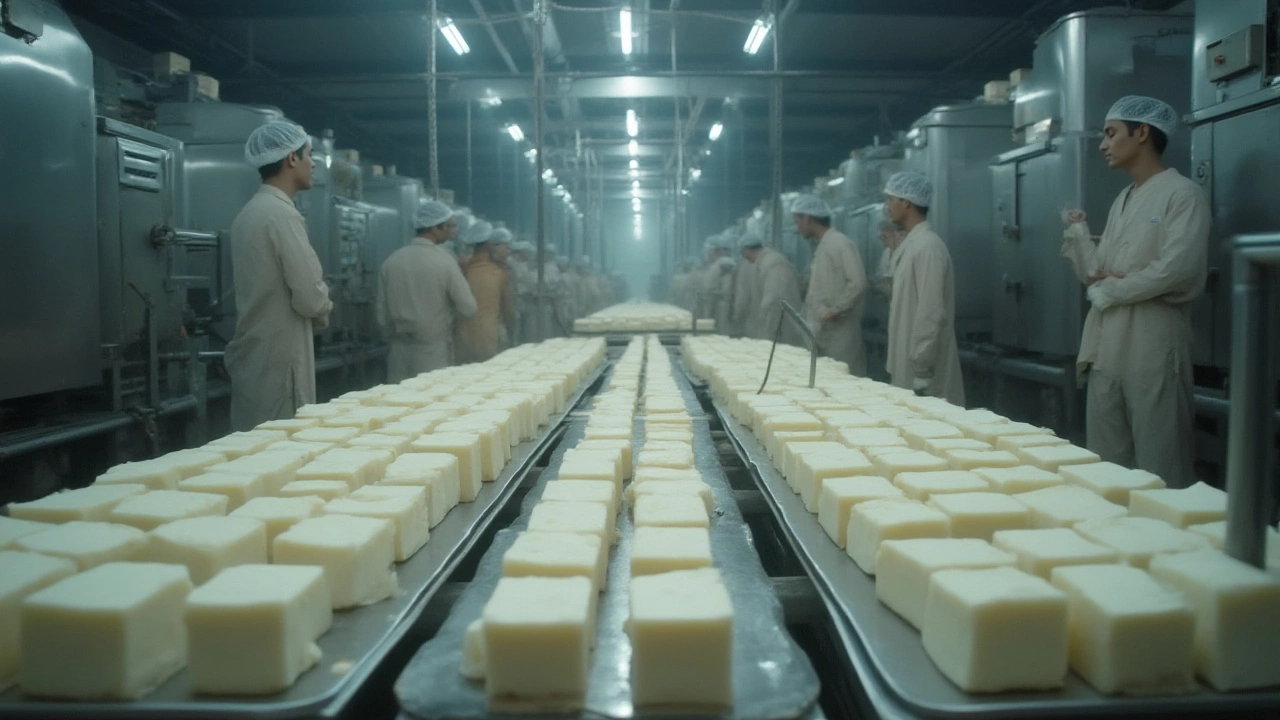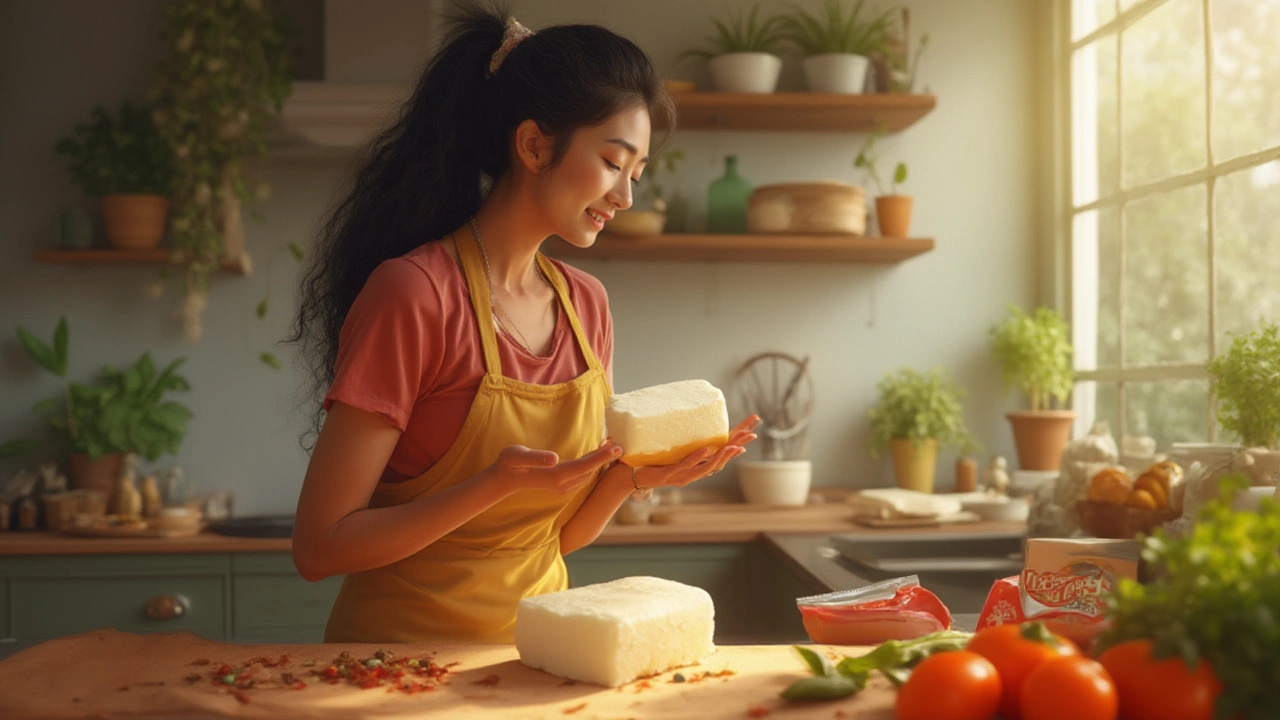It’s weirdly disappointing: you finally manage to find a decent block of paneer at the store, but after tossing it in the pan, it turns out tough and spongy—more like eraser than cheese. If you grew up eating homemade paneer or just crave something creamy for your curry, you know this is not how it should be. But is it possible to fix this? Or at least figure out why store-bought paneer is almost always so hard?
The Science Behind Paneer Texture
Paneer is not just cheese. It’s a milk product with simple but delicate chemistry. The traditional process is gentle: bring fresh milk to a boil, add an acid (like lemon juice or vinegar), and gently separate the curds from the whey. If this sounds familiar—like making ricotta—you’re not wrong. But the key is temperature and time. If the milk is overheated, stirred roughly, or acid is dumped in too fast, the protein bonds get tight and squeeze out moisture. And bam: rubbery, hard paneer.
Commercial paneer makers have to mass-produce hundreds of kilograms at a time, aiming for uniformity and long shelf life. So, they cut corners. They often use UHT (ultra-high temperature) milk or milk powder, both of which already lack some creaminess. To make matters worse, large-scale processors usually apply higher heat and set acid fast to speed things up. This means most of the whey leaves the cheese in minutes, and you're left with a block that’s dense and low in fat.
There’s another issue: moisture retention. Commercial paneer is often pressed with heavy weights (sometimes even hydraulic presses) to get an even block for slicing and packaging. At home, we might use a pan or just hands, but never the kind of industrial pressure machines use. Water gets squeezed out to dodge spoilage and keep the product shelf-stable. Softer paneer would go bad fast, so the tradeoff for a fridge-ready block is that dry, chewy texture.
Look at additives too. Some brands mix in starches, anti-caking agents, or stabilizers to make paneer last or look whiter. But these can mess with texture, making it grainy or even rubbery. Read the label—if there’s anything but milk, acid, and maybe a trace of salt, you’re not getting classic paneer.
Secrets of Traditional Homemade Paneer
The good stuff you get in Indian households or fresh marts? That’s made differently. Home cooks rarely use processed milk, and they don’t need it to stay perfect for weeks. As a result, their paneer is much creamier, sometimes with bits so soft they squish like ricotta. Slow curdling is the magic ingredient—if you slowly add acid and stir gently just until the milk splits, you get grains that are soft and moist.
Pressing time changes everything. Most people in India use just enough pressure to get paneer to “hold,” maybe 15-30 minutes. This leaves some whey locked in and keeps it tender. In comparison, store-bought brands often press the cheese for hours.
Fat content matters, too. Homemade paneer usually starts with full-cream milk; even buffalo milk is common in some regions, which is much higher in fat than cow’s milk. Skim or low-fat milk—which is often the base for packaged paneer—yields a firmer, less lush texture. No wonder a curry at home just melts in your mouth, while the store version sits in your teeth.
Here’s a famous tip from Indian aunties: soak store-bought paneer cubes in hot water for 10-15 minutes before using. This helps them reabsorb some moisture. But honestly? It won’t make it as creamy as the homemade stuff, but the difference is noticeable. You can add a touch of milk to the soaking water for even better results.

How Manufacturers Make Store-Bought Paneer
Let’s get real about what goes down in commercial kitchens. It’s nothing like the slow, careful, and almost meditative process of making paneer at home. Factories are all about volume, safety, and making a product that won’t spoil in a few days. They use large stainless-steel vats, industrial pumps, acid in precise doses—and they want uniform blocks every time. This can come at the expense of taste and tenderness.
Some of the common commercial practices include:
- Using UHT or pasteurized milk, often even milk solids or reconstituted milk powder.
- Cutting costs by starting with low-fat milk.
- Introducing citric acid or vinegar all at once (quick coagulation ruins tenderness).
- Applying intense mechanical pressure to speed up drainage and block formation.
- Adding stabilizers and anti-caking agents to prolong shelf life and avoid surface stickiness.
This is why a lot of store-bought paneer tastes bland and feels more like tofu than cheese. They also pack it in vacuum-sealed plastic containers, which means zero chances for the cheese to breathe or age naturally.
Check this useful table that compares homemade and store-bought paneer characteristics:
| Feature | Homemade Paneer | Store-Bought Paneer |
|---|---|---|
| Milk Source | Fresh, often full cream | UHT or rehydrated powder, often skimmed |
| Processing Speed | Slow, gentle acidification | Quick, for high output |
| Pressing | Light, short-duration | Heavy, industrial presses |
| Additives | None, usually | Starch, stabilizers, anti-caking agents |
| Texture | Soft, crumbly, moist | Dense, dry, rubbery |
| Shelf Life | 2-3 days | 1-2 weeks or more |
It’s no accident that store-bought paneer feels more resilient than the stuff from your grandma’s kitchen. It’s engineered to be durable, not delicious.
How to Fix Hard Paneer and Get a Softer Result
So, can you do anything if all you can get is packaged paneer? Absolutely. While you can’t turn rubber back into cream, you can make store-bought blocks usable—and even tasty—in a few handy ways:
- Soak in Hot Water or Milk: Before using, cut into cubes and soak in very hot water for 10-20 minutes. Bonus points for dropping in a splash of whole milk—this brings back a little of what was lost during processing. You’ll get noticeably softer bites.
- Marinate for Flavor: If you’re making paneer tikka or kebabs, coat cubes in yogurt, lemon, and spices before grilling. The acidity gently softens the cheese.
- Slow Cooking: Don’t fry paneer right away—add it directly to stews, curries, or sauces. Give it time to absorb liquid and mellow out in a gentle simmer.
- Homemade Hack: If you’re up for it, make your own paneer at home. All you need is fresh milk, lemon juice or vinegar, a clean cloth, and a strainer. You won’t go back!
- Avoid Overcooking: Extra cooking can make paneer rock-hard. If you’re frying or grilling, just a minute or two per side is enough. Add it to hot curries at the last minute if possible.
- Microwave Reset: Need a last-ditch fix? Briefly microwave paneer cubes covered with a damp paper towel for about 30 seconds—it plumps them up slightly by steaming moisture inside.
One thing you’ll notice: some brands are better than others. If you have an Indian grocery nearby, ask for “malai paneer”—this usually means higher fat content and softer texture. Some regional brands try to keep things traditional, but honestly, nothing beats homemade.
The reality is, paneer is not meant to be aged, stored for weeks, or pressed into perfect cubes. The best stuff comes from the pot to the plate in hours, not weeks. If you’re feeling adventurous, give making it at home a try. You only need milk and acid, but a sprinkle of patience and a dash of curiosity help too. It’s less work than you think, and you’ll finally know just how soft and indulgent paneer can be, even if you live thousands of miles from India. Once you get the hang of it, you might quietly skip that cardboard store block forever.
